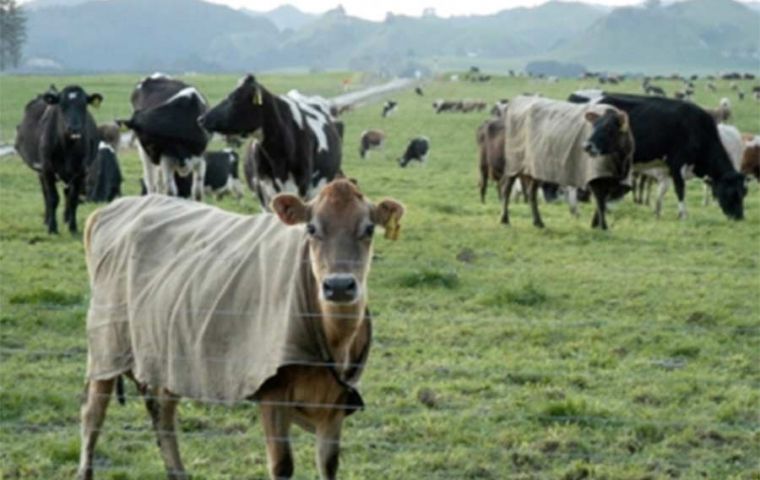MercoPress. South Atlantic News Agency
3,000 cattle die of hypothermia in Brazil, claim Matto Grosso do sul Veterinarians
 Temperatures in the most affected areas ranged from 6 to 9 degrees Celsius, according to local press reports
Temperatures in the most affected areas ranged from 6 to 9 degrees Celsius, according to local press reports Some 3,000 head of cattle died from hypothermia in Brazil's Mato Grosso do Sul farming state in recent days, according to a statement posted on the website of local veterinary services on Wednesday.
The deceased animals represent a tiny fraction of Brazil's cattle herd of about 224 million head and their deaths and are unlikely to compromise beef production at meatpackers like JBS , which operate in the state. Brazil has become the world's leading exporter of beef and animal protein.
But they drew attention as they are uncommon. Temperatures in the most affected areas ranged from 6 to 9 degrees Celsius, according to local press reports. Alcides Torres, owner of agribusiness consultancy Scot Consultoria, said local cattle breeds can withstand the low temperatures of the country's winter, which started this week.
“Brazil exports live cattle for slaughtering in Turkey below snow,” Torres said. “It was the cold but there was something else.”
Mato Grosso do Sul veterinary services did not reply to media requests for comment beyond a statement in which it updated the cold-related cow deaths tally 2,725.
Hypothermia occurs when body temperature drops below normal, and can be classified in cattle as mild, moderate and severe, the statement said. The animal's nutritional state, the low availability and quality of pastures, as well as the absence of shelters to protect animals against sudden climate change, rainfall and winds, all may contribute to cases of mortality due to hypothermia, authorities said.
“Previous episodes of mortality due to weather conditions in the state have already been described as prone to occur in a cyclical way,” the statement noted. In Brazil cattle mainly graze freely.
During winter, dry weather and lower food availability tend to tighten supplies, raising cattle prices.
The opposite is true in the first half of the year, when pastures thrive on abundant rain and sunshine, helping animals gain weight and boosting supplies available to meat processors, Torres said.
“With this cold, with the threat of frost, people thought there would be an oversupply of cattle,” Torres said. “There wasn't, which suggests that supply is adjusting to demand.”




Top Comments
Disclaimer & comment rulesCommenting for this story is now closed.
If you have a Facebook account, become a fan and comment on our Facebook Page!